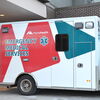Processing Your Payment
Please do not leave this page until complete. This can take a few moments.
- News
-
Editions
-
- Lists
-
Viewpoints
-
Our Events
-
Event Info
- Business Leaders of the Year Reception 2025
- Women's Leadership Forum 2025
- On the Road with Mainebiz in Bethel
- Health Care Forum 2025
- On The Road with Mainebiz in Greenville
- On The Road with Mainebiz in Waterville
- Small Business Forum 2025
- Outstanding Women in Business Reception 2025
- On The Road with Mainebiz in Bath
- 60 Ideas in 60 Minutes Portland 2025
- 40 Under 40 Awards Reception 2025
- On The Road with Mainebiz in Lewiston / Auburn
- 60 Ideas in 60 Minutes Bangor 2025
Award Honorees
- 2025 Business Leaders of the Year
- 2024 Women to Watch Honorees
- 2024 Business Leaders of the Year
- 2023 NextUp: 40 Under 40 Honorees
- 2023 Women to Watch Honorees
- 2023 Business Leaders of the Year
- 2022 NextUp: 40 Under 40 Honorees
- 2022 Women to Watch Honorees
- 2022 Business Leaders of the Year
-
-
Calendar
-
Biz Marketplace
- News
- Editions
- Lists
- Viewpoints
-
Our Events
Event Info
- View all Events
- Business Leaders of the Year Reception 2025
- Women's Leadership Forum 2025
- On the Road with Mainebiz in Bethel
- Health Care Forum 2025
- On The Road with Mainebiz in Greenville
- + More
- On The Road with Mainebiz in Waterville
- Small Business Forum 2025
- Outstanding Women in Business Reception 2025
- On The Road with Mainebiz in Bath
- 60 Ideas in 60 Minutes Portland 2025
- 40 Under 40 Awards Reception 2025
- On The Road with Mainebiz in Lewiston / Auburn
- 60 Ideas in 60 Minutes Bangor 2025
- - Less
Award Honorees
- 2025 Business Leaders of the Year
- 2024 Women to Watch Honorees
- 2024 Business Leaders of the Year
- 2023 NextUp: 40 Under 40 Honorees
- 2023 Women to Watch Honorees
- 2023 Business Leaders of the Year
- + More
- 2022 NextUp: 40 Under 40 Honorees
- 2022 Women to Watch Honorees
- 2022 Business Leaders of the Year
- Nomination Forms
- Calendar
- Biz Marketplace
Robert Wood Johnson Foundation: Sagadahoc is Maine's healthiest county
The Robert Wood Johnson Foundation’s 2016 County Health Rankings, an annual snapshot comparing the overall health of nearly every county in the nation, identifies Sagadahoc County as being once again Maine’s healthiest county. The midcoast county in which Bath and Topsham are the largest communities is followed by Cumberland, Knox, York and Lincoln counties, while Washington County dropped to the unhealthiest spot.
The foundation’s rankings compare counties on 30 factors that influence health, including education, housing, violent crime, jobs, diet and exercise.
The rankings are also used as a benchmark for MaineHealth’s Health Index Report, which was released the same day and has become a barometer of progress on seven of Maine’s most-pressing health priorities: Childhood immunizations, tobacco use, obesity, preventable hospitalizations, cardiovascular deaths, cancer deaths and prescription drug abuse and addiction.
Together, the two reports provide insight into community health trends, progress and challenges in Maine and across the country, MaineHealth stated in a release highlighting some of the findings in its sixth annual health index report.
Key findings of MaineHealth’s report include:
- Drug overdose death rates rose more sharply in Maine than nationally between 2010-14; and perhaps contrary to common perception, 48% of drug deaths in 2012-14 were individuals aged 45 or older.
- There was a sharp increase in Neonatal Abstinence Syndrome — babies born to drug-addicted mothers. When tracking of this syndrome began in 2004, 54 Maine babies were identified; in 2015, this number rose to more than 1,000, accounting for between 4% of births in Cumberland County to 17% and 19% in Penobscot and Piscataquis counties, respectively. Low birth weight, premature birth, respiratory distress, among many long-term development and social after-effects, are attributed to this syndrome.
- On-time childhood vaccination rates showed continued improvement. Up-to-date rates for eight of 10 individual vaccine rates increased across the 39 MaineHealth pediatric and family medicine practices from 2014-15, as did the up-to-date rate for the 10-vaccine bundle.
- Cardiovascular deaths remain a challenge: While age-adjusted rate of stroke deaths decreased from 2002-14, the rate of decline for all types of cardiovascular deaths has slowed in recent years, with little to no change between 2010 and 2014.
- Tobacco remains the leading cause of preventable death. Maine high school students’ use of tobacco declined significantly in 2015 to 16%, but a trend of e-vapor and e-cigarettes has emerged, with one-third of the students indicating they had tried and over 18% had used such products within the last 30 days. There is evidence that e-cigarette use by youth who had never smoked could lead to use of cigarettes and other tobacco products.
- The estimated percent of adults with obesity has not increased from 2012-14, while the rate for students in grades 5-12 has remained steady from 2011-15. “This flattening of the curve is an important achievement on the path to reduce obesity rates,” the report states.
MaineHealth is the Portland-based parent company of Maine Medical Center and several member and affiliated hospitals and health care services throughout Maine.
Read more
MaineHealth hospitals given top marks for anti-tobacco efforts
Maine health systems to use $673,000 in grants to improve care for uninsured
MaineHealth and Dana-Farber partner to improve cancer care in Maine
Harvard Pilgrim grants help fight obesity, promote healthy food in Maine









Comments